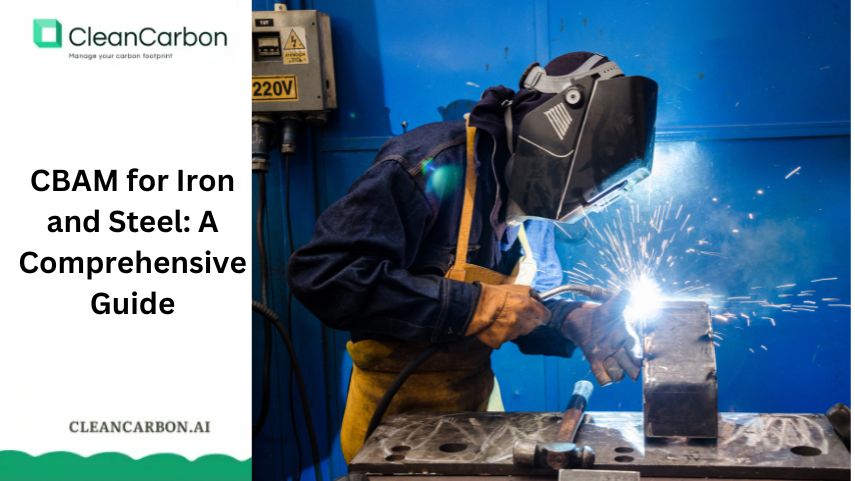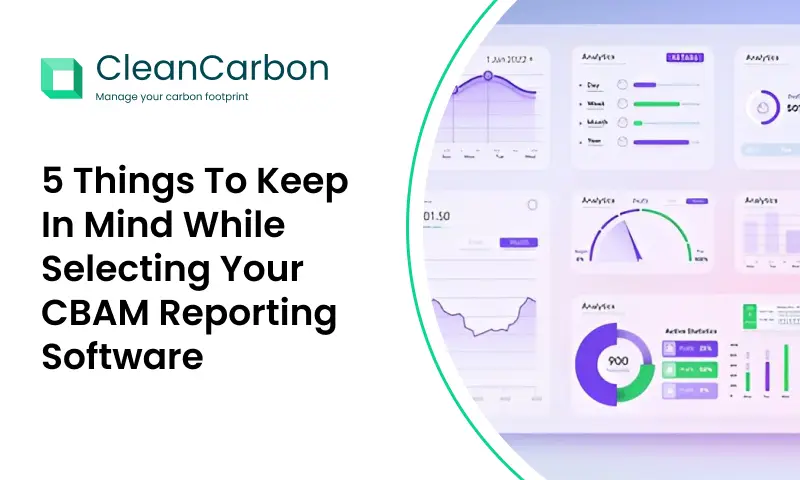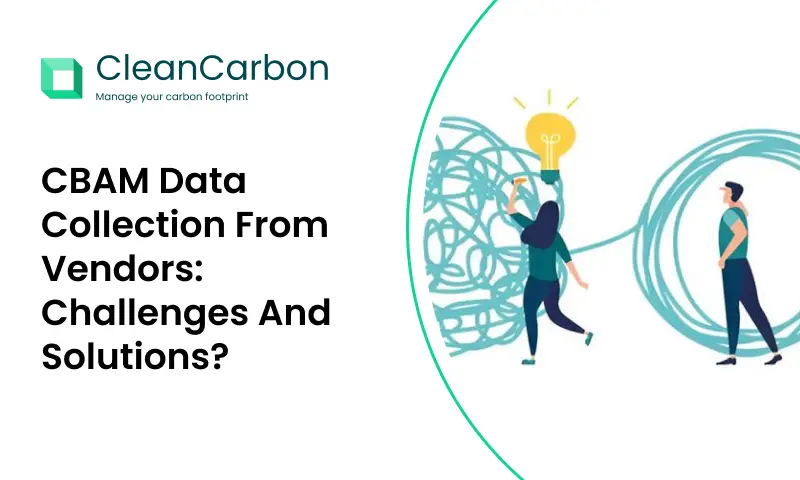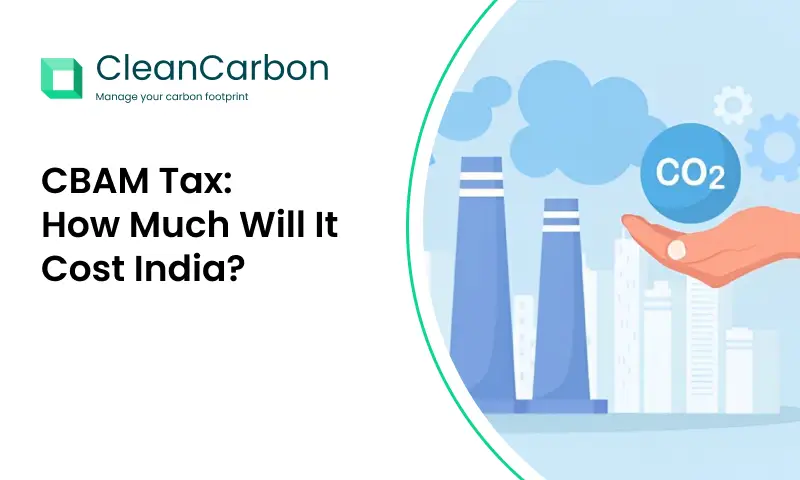The Carbon Border Adjustment Mechanism (CBAM) has become a critical tool in the global effort to combat climate change. As industries like iron and steel are among the largest carbon emitters, the introduction of CBAM represents a significant step toward reducing emissions and leveling the playing field for industries complying with stringent environmental regulations. This blog will explore CBAM in the context of iron and steel, its implications, and how businesses can adapt to this transformative policy.
What is CBAM?
The Carbon Border Adjustment Mechanism, or CBAM, is a regulatory framework introduced by the European Union (EU) to address carbon leakage. Carbon leakage occurs when industries move production to countries with less stringent environmental regulations, undermining global climate goals. CBAM imposes a carbon price on imports of goods, ensuring that imported products are subject to the same carbon costs as those produced within the EU.
Objectives of CBAM
- Reduce Carbon Leakage: Prevent industries from relocating to avoid environmental costs.
- Encourage Global Climate Action: Incentivize countries outside the EU to adopt similar carbon pricing mechanisms.
- Level the Playing Field: Protect domestic industries from unfair competition by ensuring that imports reflect the true cost of carbon emissions.
The Importance of CBAM for Iron and Steel
Iron and steel production is among the most carbon-intensive industrial processes, accounting for approximately 7% of global carbon dioxide emissions. The integration of CBAM into this sector aims to:
- Promote decarbonization by encouraging cleaner production methods.
- Mitigate the competitive disadvantages faced by EU-based producers adhering to stricter emission norms.
- Foster innovation in low-carbon technologies.
How CBAM Works for Iron and Steel
CBAM applies a carbon price on imports based on the emissions associated with their production. Here’s a step-by-step breakdown:
1. Calculation of Embedded Emissions
CBAM applies a carbon price on imports based on the emissions associated with their production. Here’s a step-by-step breakdown:
2. Carbon Price Adjustment
Importers purchase CBAM certificates equivalent to the emissions embedded in the goods. The price of these certificates aligns with the EU’s Emissions Trading System (ETS).
3. Monitoring and Reporting
Importers are required to report annually on the total embedded emissions of their imports and the corresponding CBAM certificates purchased.
4. Verification and Compliance
Authorities verify the accuracy of the reports and ensure compliance. Non-compliance can result in penalties.
Challenges Facing the Iron and Steel Sector
1. High Emissions Intensity
Traditional blast furnace-based steelmaking is heavily reliant on coal, resulting in significant carbon emissions. Transitioning to low-carbon alternatives, such as electric arc furnaces (EAF) powered by renewable energy, is capital-intensive.
2. Global Competitiveness
CBAM could lead to higher costs for non-EU exporters, potentially sparking trade disputes or retaliation.
3. Technological Barriers
Adopting green technologies like hydrogen-based steelmaking or carbon capture and storage (CCS) requires substantial research, development, and investment.
Solutions and Strategies for the Iron and Steel Industry
1. Adoption of Low-Carbon Technologies
Hydrogen-Based Steelmaking
Hydrogen can replace coal as a reducing agent in steel production, significantly reducing carbon emissions.
Carbon Capture and Storage (CCS)
CCS technologies capture emissions from steel plants and store them underground, preventing their release into the atmosphere.
Electric Arc Furnaces (EAF)
EAFs use electricity, preferably from renewable sources, to melt scrap steel, offering a more sustainable production method.
2. Enhancing Energy Efficiency
Improving energy efficiency in production processes can lower emissions and reduce operational costs. Techniques include:
- Optimizing heat recovery systems.
- Upgrading to energy-efficient machinery.
3. Leveraging Renewable Energy
Shifting to renewable energy sources for powering steel plants can significantly reduce indirect emissions.
4. Collaboration and Innovation
Industry players, governments, and research institutions must collaborate to drive innovation and share best practices for decarbonization.
Key LSI Keywords:
- Hydrogen steelmaking
- Carbon capture in steel industry
- Renewable energy in steel production
- Energy-efficient steel manufacturing
Economic Implications of CBAM for Iron and Steel
For EU Producers
- Competitive Advantage: A level playing field with non-EU producers ensures fair competition.
- Market Opportunities: Enhanced demand for low-carbon steel in global markets.
For Non-EU Exporters
- Cost Implications: Higher costs due to CBAM certificates may reduce competitiveness in the EU market.
- Incentive for Decarbonization: Encourages adoption of cleaner technologies to remain competitive.
For Consumers
- Price Impacts: Potential increase in the cost of steel-intensive products due to higher production costs.
- Demand for Green Products: Growing consumer preference for sustainable products could offset price increases.
The Future of CBAM and the Iron and Steel Industry
CBAM is expected to evolve, expanding to cover more sectors and tightening regulations. For the iron and steel industry, this presents both challenges and opportunities:
Opportunities
- Innovation: Increased investment in research and development for sustainable technologies.
- Market Leadership: EU producers can lead the global shift to green steel.
Challenges
- Compliance Costs: Ensuring compliance with CBAM regulations can strain resources, especially for smaller firms.
- Global Coordination: Aligning CBAM with international trade rules and fostering global cooperation remains critical.
Conclusion
The introduction of CBAM for iron and steel marks a pivotal moment in the global effort to address climate change. While the road ahead presents challenges, it also offers immense opportunities for innovation, collaboration, and sustainable growth. By embracing low-carbon technologies, enhancing energy efficiency, and leveraging renewable energy, the iron and steel industry can not only comply with CBAM but also lead the transition to a greener future.
Key Takeaways
- CBAM aims to prevent carbon leakage and promote global climate action.
- The iron and steel sector must adapt by adopting low-carbon technologies and enhancing energy efficiency.
- Collaboration and innovation are essential to overcoming challenges and seizing opportunities.
By proactively addressing these challenges, the iron and steel industry can turn CBAM from a regulatory hurdle into a catalyst for transformation and sustainability.
Read Also: CBAM Landscape: Technological Solutions and Innovations






